

DR Andrew j. HAYDUKE
Anyone considering breast implants (breast augmentation) and doing internet Google research (Googling it) will undoubtedly come across at least one plastic surgeon who is advertising “Gummy Bear” breast implants or “anatomical” teardrop shaped breast implants. I constantly see this type of advertising both in my Palm Springs (Rancho Mirage) and Beverly Hills office locations. You might see aggressive marketing claims that make “Gummy Bear” or “anatomical” teardrop shaped breast implants seem like an amazing new invention (even though they have been around for a very long time). Round breast implants are now even being marketed with thicker (firmer) “high-strength cohesive” silicone gel, that claims to make round breast implants more “form stable”. I will try to dispel some myths and outline actual facts regarding the so-called “gummy bear” anatomical teardrop shaped breast implants and the newer “high-strength cohesive” (form stable) round breast implants.
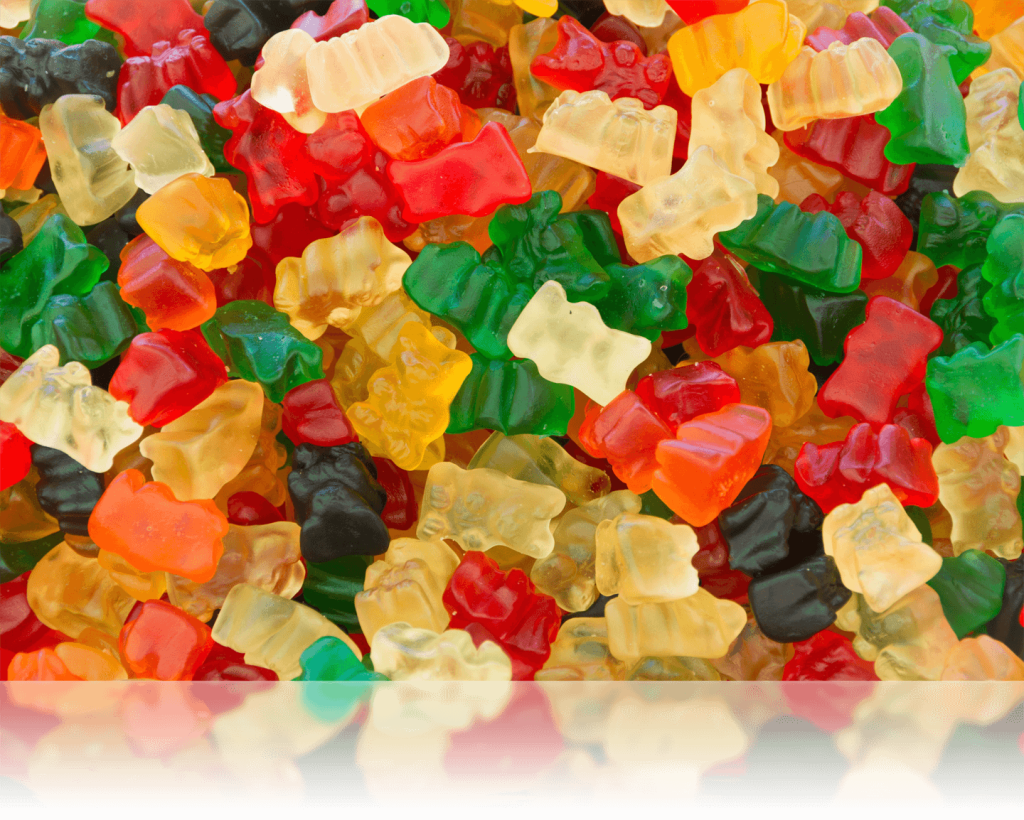
Let us begin with the term “Gummy Bear”. No breast implant manufacturer in the USA has an implant that they can legally call a “gummy bear” breast implant. The term “gummy bear” actually originated with a German gelatin-based candy shaped in the form of a small bear. The name that the original manufacturer (Haribo) trademarked for this candy was actually “Gold Bears”. The Jelly Belly Candy company later created their own clone of the candy and called their candies “Gummi Bears” (they used an “i” instead of a “y” for gummi). Disney subsequently came out with an animated television series called “Adventures of the Gummi Bears” (mid 1980’s).
If you look closely at all the websites of the FDA approved breast implants in the United States, not a single breast implant manufacturer has a breast implant that is formally called a “Gummy Bear” breast implant. Breast implant manufacturers sometimes find a creative way of sneaking in the word “gummy” or sneaking in the phrase “gummy bear” into their marketing campaigns, but the fact is that nobody manufactures an implant that is actually called a “Gummy Bear” breast implant. The term “gummy bear” breast implant is just a slick marketing term that gets people’s attention. People generally have a very positive feeling and attitude toward the famous German gummy bear candies and breast implant manufacturers try to capitalize on this positive feeling. The reality is – the “Gummy Bear” phrase is simply all about marketing and it gets people’s attention.
Breast implants themselves are made up of two parts. The first part is similar to the outside of balloon and is called the breast implant outer shell. All breast implant outer shells are made of a silicone rubber-like polymer. Inside this outer shell is the actual filler material. The filler materials of FDA approved breast implants in the USA are either saline (salt-water) or silicone gel. The thickness of the filler material ranges from an outright liquid (salt-water) to varying thicknesses of a silicone gel. Silicone gel can range from a liquidy (maple syrup like) thickness to the extreme thickness of a gummy bear candy (which is a semi-solid material). From a chemistry standpoint, silicone gels can be produced of varying viscosity (thicknesses) by progressively increasing the length of the polymer chains within the silicone gel or the degree of cross-linking between the polymer chains within the silicone gel. Nowadays the silicone gel can be so incredibly thick (gummy) that the breast implant keeps its shape even after being cut in half! (this is marketed as form-stable).
![]()
The two basic shapes of breast implants are either round or anatomical teardrop shaped (nicknamed “gummy bear” implants). The anatomical teardrop shaped “gummy bear” implants attempt to mimic the shape of a natural breast by having more projection (more gel) in the lower half of the teardrop implant (hence the term teardrop) and a flatter gently sloped upper half. When outside the human body and held upright in your hand, the anatomical teardrop shaped “gummy bear” implant looks somewhat similar to the profile of a natural female breast. The natural (non-augmented) female breast generally has more tissue in its lower half as compared to its upper half when a female stands upright.
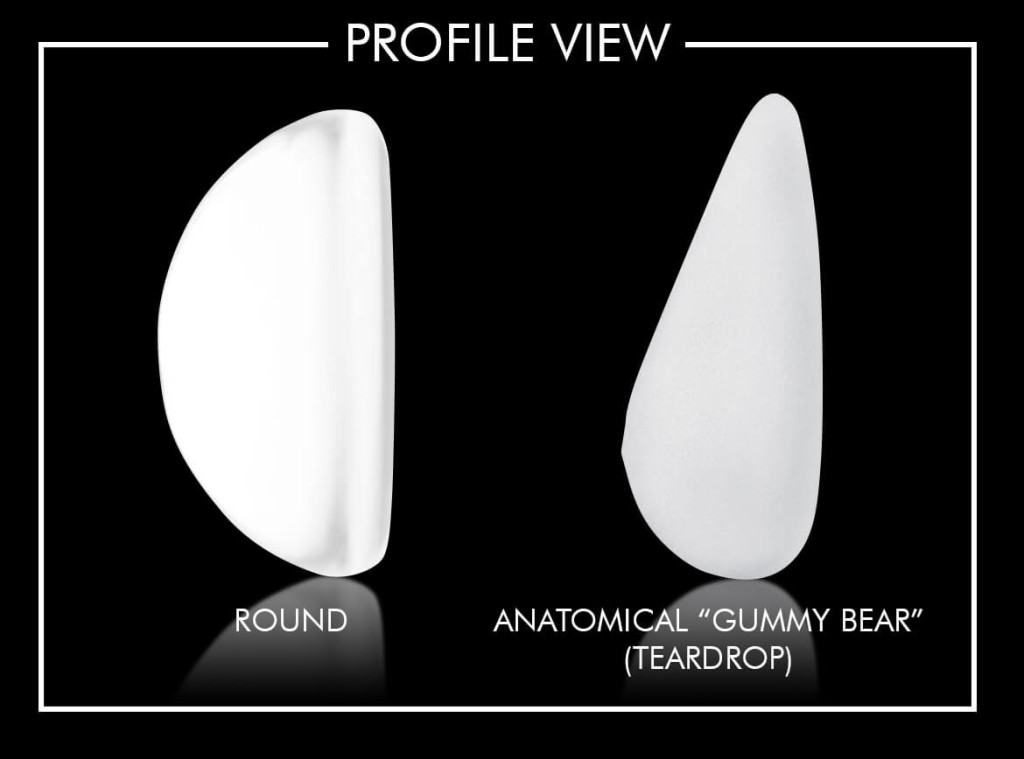
These two basic implant shapes also come at varying degrees of projection – known as profiles. The profile of a breast implant refers to the level of forward projection from the chest in relation to the base width of the implant. A higher profile breast implant will create a more prominent silhouette than a lower profile breast implant of the same size. For example, the images below show the different profiles available for the same size implant (meaning all the breast implants in the image could represent a 300 cc size implant, but the profiles/projection are actually different for this same 300cc size implant). Another way to look at it is that all the breast implants in the images below have the same amount of silicone gel within them (ex: 300 cc), but the projection of the implant varies with the profile type (profile type: low vs moderate vs full etc).


In a quest to out-do each other, several USA FDA approved breast implant manufacturers (Allergan (Natrelle) and Sientra) started to create (and aggressively market) silicone gel breast implant filler material that was firmer and more cohesive than their competitors. I like to call this the “gummy bear breast implant war”. The breast implant manufacturers are trying to one-up the competitor by making more “highly cohesive” or “form stable” breast implants by increasing the thickness (and firmness) of the silicone gel filler material – to the point of creating almost a firm semi-solid breast implant (rather than an ultra-soft breast like implant). Compared to the traditional ultra-soft silicone gel breast implant that has been used for decades (for example, the traditional soft silicone gel implants created by Mentor decades ago), all of the recent “highly strength cohesive” and “form stable” silicone implants feel significantly firmer to the touch to me. To a certain extent, I believe that some of the breast implant manufacturers might have lost sight of the importance of the actual softness of the silicone gel implant – in the heat of the battle for the most “highly cohesive” or “form stable” silicone gel filler material.
Traditionally, “gummy bear” thick gel filler material was reserved only for “anatomical” teardrop shaped breast implants in order to maintain the specific teardrop shape (semi-solid gel was used to maintain the teardrop shape consistently). Contrary to the ads that suggest that teardrop shaped silicone breast implants are new, the teardrop shaped breast implant has been around since 1962. The teardrop shape was used in the first generation of silicone gel implants created by Dr. Cronin and Dr. Gerow. (Reference: Maxwell, G.P., Gabriel A. Breast Implant Design Gland Surg. 2017 Apr; 6(2): 148–153.)
Currently, when ads refer to “gummy bear” breast implants, they are usually still referring to “anatomical” teardrop shaped breast implants (rather than round breast implants). If you look at the two basic implant profiles side by side outside the human body, it is striking obvious that the teardrop anatomical “gummy bear” implant has a more realistic breast-like shape. No one can argue that the “anatomical” teardrop shaped gummy bear implants look more realistic outside the human body – but the keywords here are “outside the human body”. Once inserted behind a human breast, the once obvious shape advantage of anatomical gummy bear teardrop implants seems to totally go away. In fact, that has been studied and scientifically proven.
Anatomical “gummy bear” teardrop shaped breast implants are also usually covered with a textured outer shell surface to try and prevent future implant rotation and malposition (after inserted into the body). Unfortunately, this textured shell surface seems to be somehow associated with the very rare immune system cancer called Anaplastic Large Cell Lymphoma (ALCL), but studies are still being done on this extremely rare condition. If an anatomical teardrop shaped “gummy bear” implant rotates within the breast pocket even a few degrees, it may cause an obvious visual problem called implant “malrotation” or “malposition”. This is one of the main reasons why manufacturers texture the outer surface of teardrop shaped “gummy bear” implants. (When round breast implants rotate within the breast implant pocket, visual problems with the breast are very unlikely since the implant is round.)
Textured breast implants have a pale white non-transparent (opaque) appearance with a subtle raised bumpy textured surface that can be easily felt (when felt outside the body). The outer shells of textured breast implants also feel somewhat thick to me.
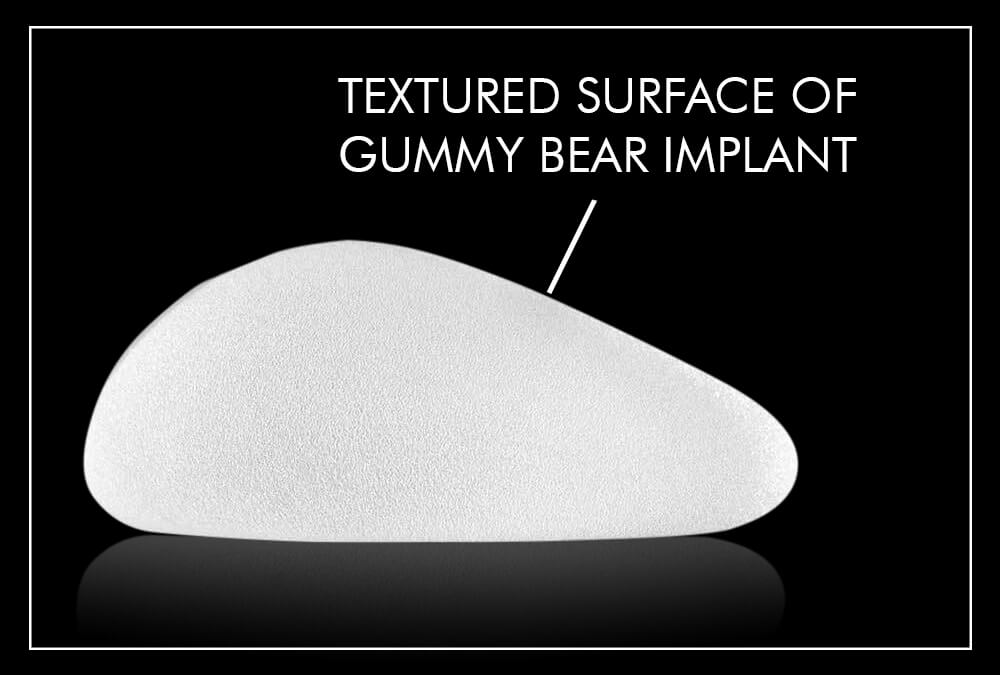
Smooth surfaced breast implants are transparent (see-through). Smooth shells are usually used for round breast implants. The outer shell surface of a smooth round breast implant feels silky-smooth to the touch. I personally prefer the feel of a smooth implant shell surface (when felt outside the body).
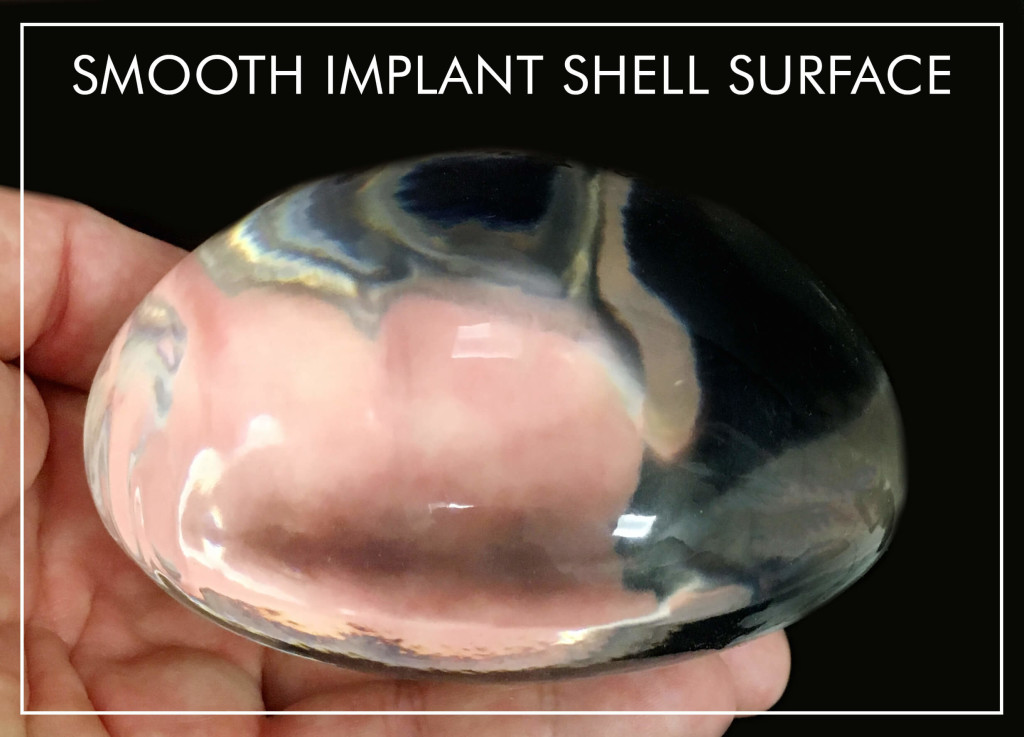
It is important to understand that all breast implants, including the newest generation highly cohesive “gummy bear” form stable silicone gel implants, can show visible rippling. In addition, all breast implants (regardless of filler material) will eventually leak. It may take over 20 years in some cases for a breast implant to finally leak, but – all breast implants will eventually leak. Breast implants are not permanent devices and none will last forever. Please do not be fooled by flashy ads from aggressive advertisers and implant manufacturers that suggest otherwise.
Nowadays, some breast implant manufacturers are even putting thick (almost semi-solid) gel inside their round smooth surfaced breast implants. Traditional soft silicone gel has been the most popular filler material for many years, but – manufacturers are now offering thicker silicone gel options even for round breast implants that are termed “high strength cohesive” or “form stable”. This more cohesive (firmer) implant gel comes at the price of feeling firmer to the touch compared with the traditional ultra-soft silicone gel implants that have been around for decades.
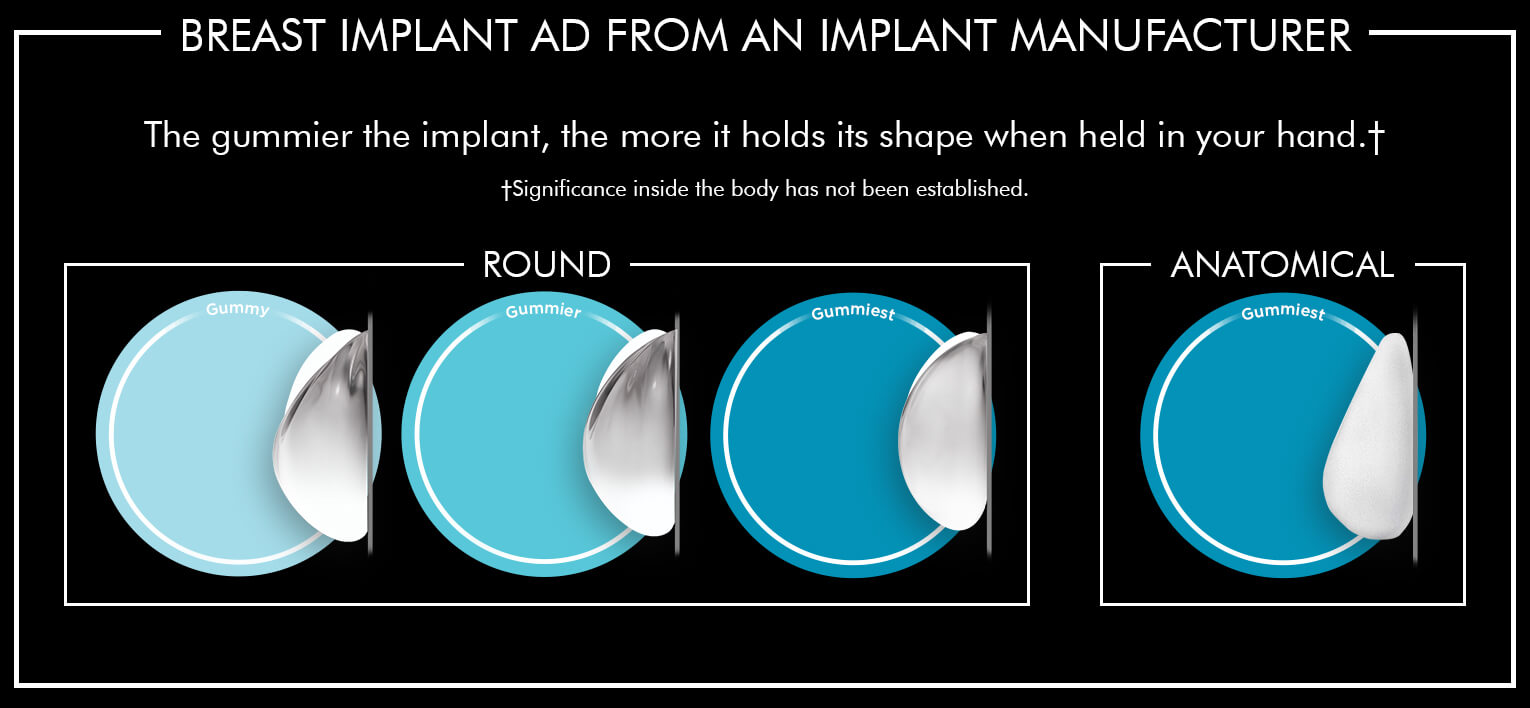
The above ad, taken from a reputable USA breast implant manufacturer, shows how this breast implant company is actually marketing three different silicone gel filler materials for round breast implants. They describe them in this ad as “gummy”, “gummier” and “gummiest”. They show the profile of the round implant as if it is being held upright in your hand. If you look closely at the upper part of the round implant in the ad, you will see that the upper implant contour stays the roundest in the “gummiest” round implant when held upright (profile view). They are saying that the “gummiest” round implant maintains its shape better when held upright in your hand. The fact is, however, that what the implant looks like when held in your hand outside the human body is probably not actually relevant. Note carefully what the manufacturer writes in the asterisk of this particular ad “significance inside the body has not been established”.
The most important part of this ad, to me at least, is that small asterisk statement that most people will simply ignore. Breast implants are obviously placed inside the human body. The upper part of the breast implant will be compressed underneath the pectoralis major muscle (in cases of submuscular breast augmentation).
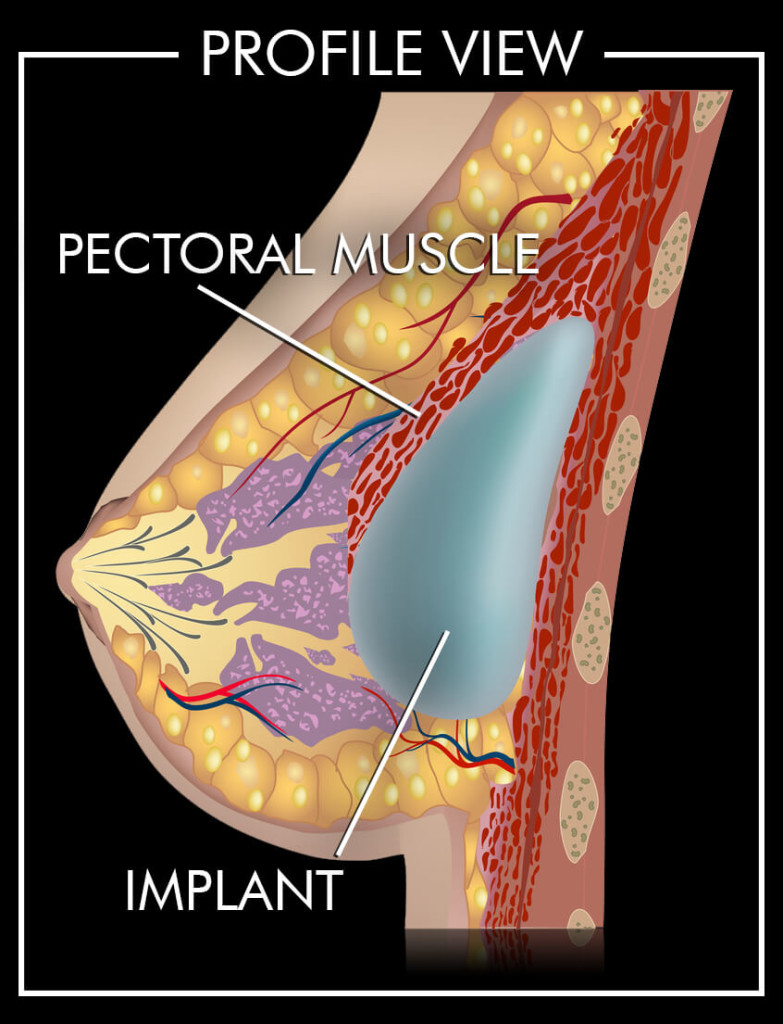
In the above illustration, you can clearly see that the upper two thirds of the round breast implant is compressed by the pectoral muscle (colored in red). This fact will obviously affect what the upper two thirds of actual breast itself will look like from the outside. Furthermore, even the worth of “anatomical” teardrop shaped breast implants compared to traditional “round” breast implants is seriously questioned after the breast implants are placed underneath the pectoral muscle. This begs one to question: once inside the body and compressed by human tissue, can anyone really tell the difference between an anatomical teardrop shaped breast implant and a traditional “round” breast implant? Which implant shape looks better after inserted into a real human?
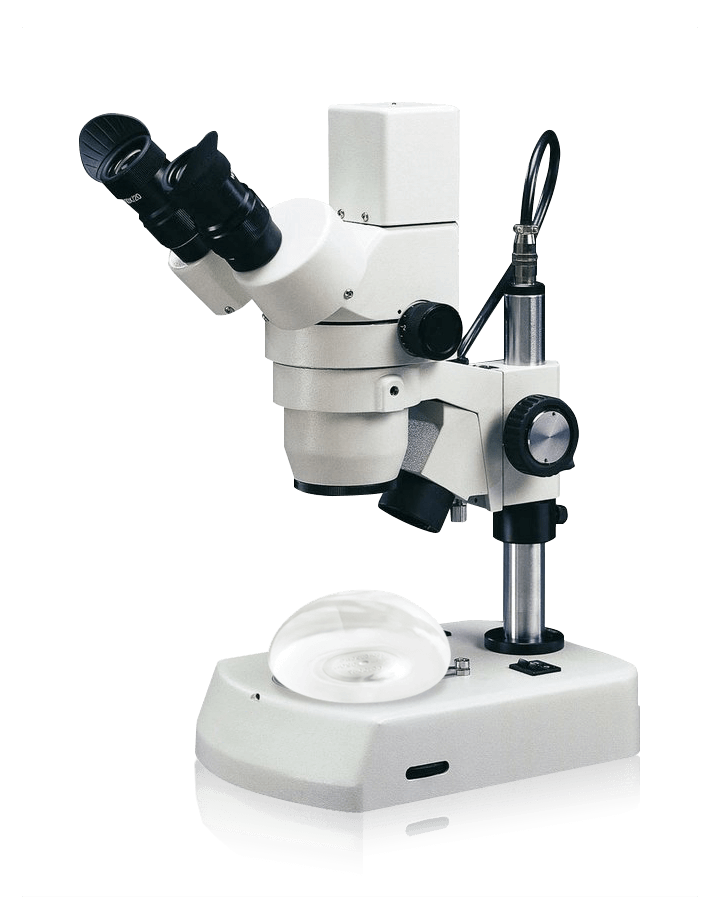
Dr. David Hidalgo tried to scientifically answer this question by performing a randomized controlled trial that was eventually published in a well-respected peer reviewed scientific journal. His goal was to determine whether “anatomical” teardrop breast implants (the so called “gummy bear” shaped implants) looked better than round implants after insertion into a human body. Dr. Hidalgo also wanted to find out if anyone could tell the difference between round vs. teardrop shaped after both breast implants were actually inserted into the same person?
Dr. Hidalgo designed a very interesting study. Seventy-five patients undergoing primary (first time) breast augmentation had a round silicone implant inserted in one breast and an anatomical teardrop silicone implant in the other breast. One side of the same patient had a round implant and the other side of the same patient had an anatomical teardrop “gummy bear” implant. After intraoperative photographs were taken, the anatomical device was replaced by a round implant to complete the procedure (to be fair to the patient). Based on examination of these intraoperative photographs, a survey designed to measure breast aesthetics was administered to 10 plastic surgeon and 10 lay reviewers for blind evaluation of the intraoperative photographs (75 cases).
The results showed that neither the plastic surgeons nor the lay reviewers (non-plastic surgeons) could tell which breast (side) had the round breast implant and which breast (side) had the anatomical breast implant. When asked which side looked better, there was no meaningful correlation with either the round or anatomical teardrop side. In fact, even fully trained plastic surgeons could identify the breast implant shape correctly in only 26.5 percent of cases. What this means is that even plastic surgeons – who insert breast implants for a living – could not tell which side had the anatomic “gummy bear” teardrop implant and which side had the smooth implant once the implants are inside the body of the same patient.
Dr. David Hidalgo’s published conclusion reads:
“This study provides high-level evidence supporting no aesthetic superiority of anatomical over round implants. Given that anatomical implants have important and unique disadvantages, a lack of proven aesthetic superiority argues against their continued use in breast augmentation.”
(Reference: Hidalgo, David A., M.D.; Weinstein, Andrew L., M.D., M.S. Intraoperative Comparison of Anatomical versus Round Implants in Breast Augmentation: A Randomized Controlled Trial. Plastic and Reconstructive Surgery: March 2017 – Volume 139 – Issue 3 – p 587-596)
Dr. Fengrui Cheng also published a large meta-analysis in a peer reviewed plastic surgery journal and his published conclusion reads:
“Generally, anatomical implants do not seem to have an aesthetic superiority compared to round implants. Plastic surgeons seemed to be unable to accurately differentiate the two implant shapes in vivo. Further studies should focus on identifying the specific indications for the use of anatomical implants.”
(Reference: Cheng, Fengrui, M.D.; Cen, Ying, M.D., Ph.D.; Liu, Chuanqi, M.D.; Liu, Ruolin, M.D.; Pan, Cheng, M.D.; Dai, Shuiping, M.D. Round versus Anatomical Implants in Primary Cosmetic Breast Augmentation: A Meta-Analysis and Systematic Review. Plastic and Reconstructive Surgery: March 2019 – Volume 143 – Issue 3 – p 711-721)
My personal view on “gummy bear” anatomical teardrop shaped breast implants is not as extreme as Dr. Hidalgo’s or Dr. Cheng’s. I personally believe that there are indeed some rare situations with legitimate reasons to use an anatomical teardrop shaped “gummy bear” implant instead of a round breast implant. I agree, however, that anatomical “gummy bear” teardrop shaped implants are not superior to round breast implants for the typical patient seeking cosmetic breast augmentation. This especially holds true if the plan is for submuscular insertion under the pectoral muscle, since no difference will likely be seen between teardrop shaped and round implants. I agree that “gummy bear” implants will not look “better” compared to round implants after they are inserted into the typical breast augmentation patient.
I believe that round breast implants with thicker “gummy bear” type silicone gel (described as “highly-cohesive” or “form stable” round implants) may be a good choice in certain rare patients with unique issues. These rare issues may include patients with extremely thin tissues (from multiple prior breast surgeries) or for patients with a severely underweight Body Mass Index (BMI) value. Patients with an unusually low “body fat percentage” may also benefit from thicker “highly-cohesive” gel implants (such as competitive body builders). If patients have had prior problems with visible implant rippling (because of very thin tissue coverage or because an extremely large breast implant was used on a very small breasted body frame), then a highly-cohesive (form stable) round breast implant or even an anatomical teardrop shaped “gummy bear” implant may be a good choice. Keep in mind, however, that even the firmest (most cohesive) gel implants can cause visible rippling – they are not ripple free! Even the implant manufacturers do not claim that the newer thick cohesive gel implants are ripple free.
I caution patients and encourage them to be skeptical of internet marketing hype regarding anatomical “gummy bear” teardrop shaped implants as well as highly cohesive (form stable) round breast implants. I also caution patients not to be too impressed by the fact that anatomical teardrop shaped “gummy bear” implants have a more realistic shape outside the human body. That particular attribute of “gummy bear” teardrop shaped implants seems to be totally irrelevant after insertion into the human body. In fact, that has been scientifically proven. The textured outer surface of the anatomical “gummy bear” teardrop shaped implants and the risks of rotation/malrotation within the breast pocket are all legitimate concerns for me.
Patients should be armed with knowledge and facts before they make their decision regarding which breast implant is right for them. As a board certified plastic surgeon, I have access to all FDA approved breast implants allowed for use in the USA and all of these breast implant options are available for my patients. I have used breast implants from all three major FDA approved manufacturers (Mentor, Allergan (Natrelle), and Sientra). During breast implant consultations at my office, I encourage my clients to feel a sample of a saline-filled implant, traditional round soft gel implant, round highly-cohesive (firm) gel implant and a “gummy bear” teardrop anatomical shaped implant. Feeling the actual implants is a very important part of the decision making process when it comes to breast augmentation, but the look of the implant outside the human body (when you hold the implant in your hand outside the human body) has proven to be much less important.
Working together with my patients, I try to help guide them to the appropriate choice for their cosmetic goals and unique body type. Sometimes patients just simply want a certain type of “new” breast implant and I am happy to oblige that request. There are many complex issues to consider when considering breast augmentation, most of which are frequently clouded by overzealous advertising of “new” or supposedly “better” breast implant designs that seem to bombard the market every few years. These complex issues will be discussed and analyzed during your private consultation with me (Dr Andrew Hayduke). It is truly not easy for a lay person to sift through the facts (vs fiction) when it comes to modern day breast implant technologies and choices. It is certainly exciting to see so many choices when it comes to modern day breast implant designs – but the newest breast implant design is not always the wisest choice.
To help determine if someone is a good candidate for breast augmentation surgery, I have also written a general breast implant (breast augmentation) informational page.